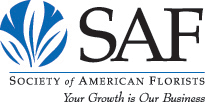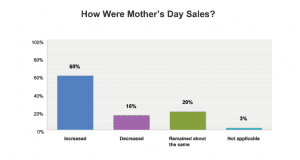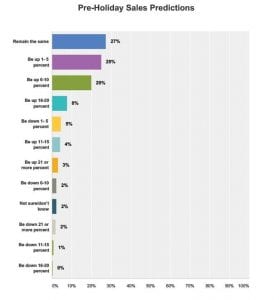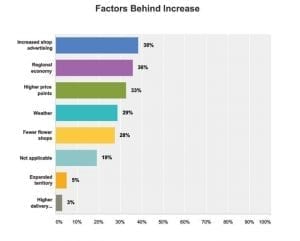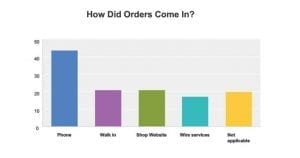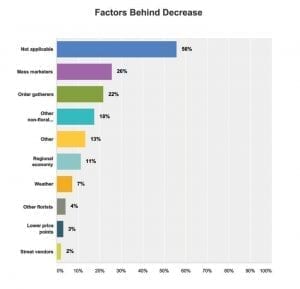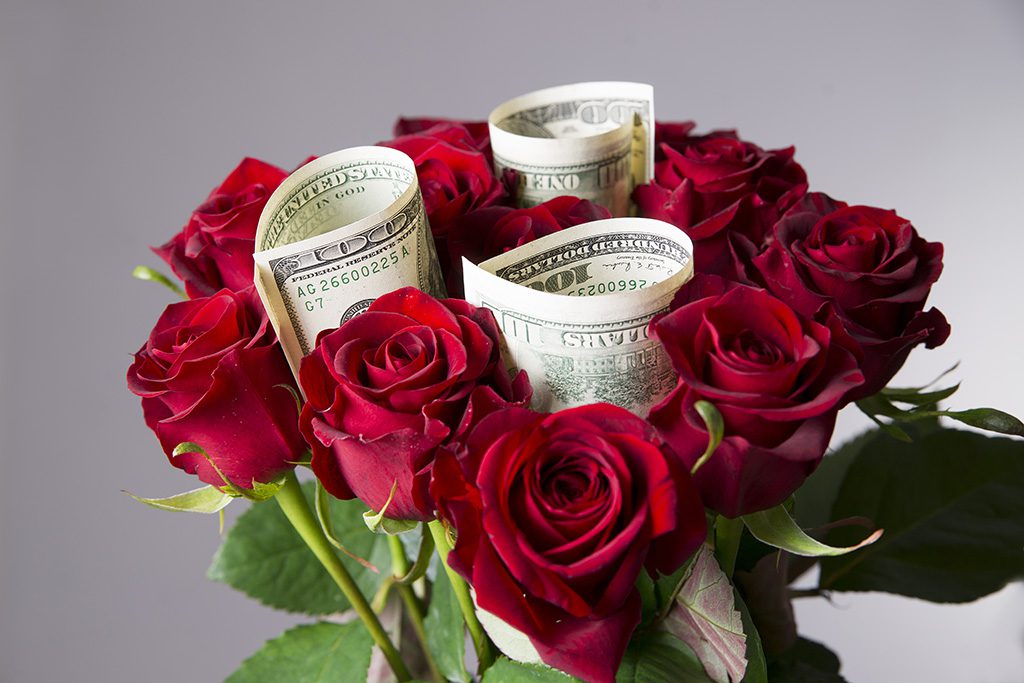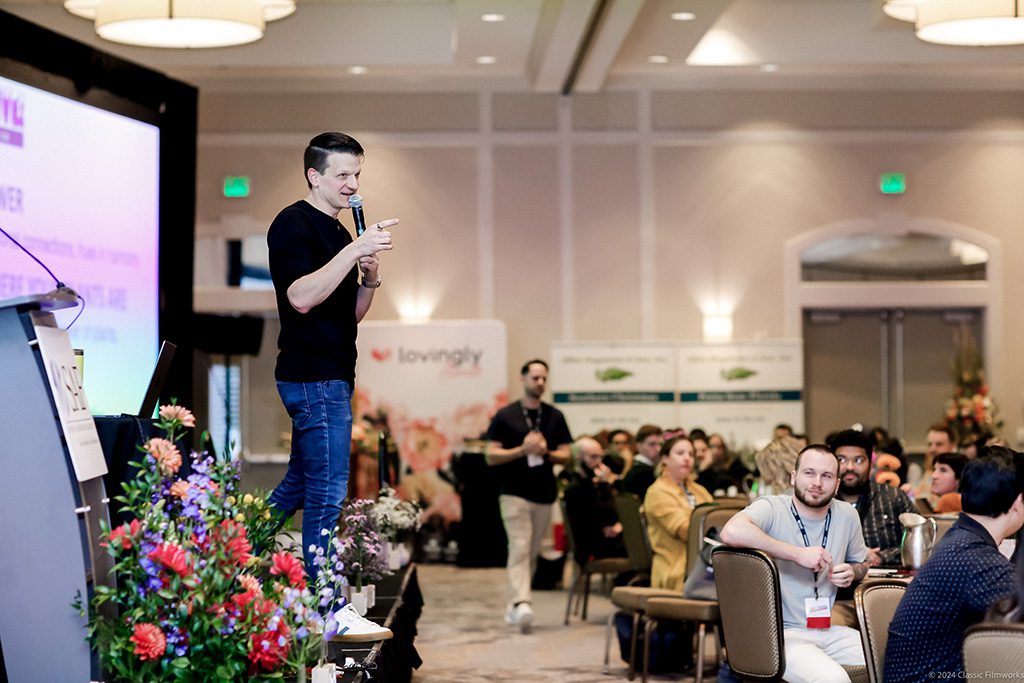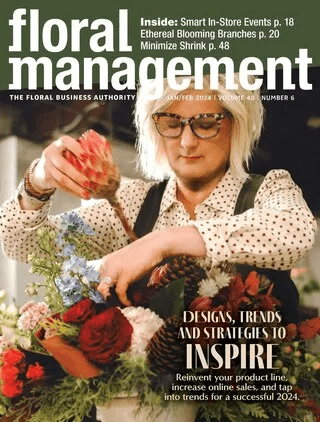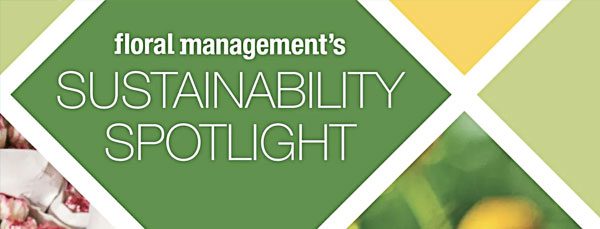Predictions of a robust Mother’s Day proved to be on target for many florists. According to a post-holiday survey conducted by the Society of American Florists, about 60 percent of member florists saw increased sales this year. Roughly 20 percent said sales were about the same as 2016. Around 16 percent saw a drop.
Prior to Mother’s Day, about 27 percent of respondents were expecting sales to remain the same. A quarter predicted a modest rise of 1 to 5 percent and 20 percent hoped for sales gains of 6 to 10 percent.
Average purchase amount per transaction this year was almost $66. That’s up from last year’s survey ($64).
Among those who saw a sales increase this year:
- 26 percent saw sales rise 6-10 percent.
- 21 percent saw sales rise 1-5 percent.
- 14 percent saw sales rise 11-15 percent.
- 13 percent saw sales rise 21 percent or more.
- 9 percent saw sales rise 16-20 percent.
The top five factors for florists who experienced an increase in sales were increased shop advertising and promotion (39 percent); regional economy (36 percent); higher price points (33 percent); weather (29 percent) and fewer flower shops in the area (28 percent).
“We are finally back on track after eight years of stale sales,” wrote one respondent in Florida. “There is so much positive optimism now and clients are spending money.”
Another Sunshine State florist reported an equally sunny take.
“We were up in total sales 25 percent [and] our local deliveries were up 35 percent,” he wrote, adding the shop had recently transitioned to a new website (through BloomNation). “Orders started coming in three weeks before the holiday, but the printer was cranking them out big time starting Thursday … I sold only two to three orders for our starting price of $60; everything else was for our average of $80 or more.”
Among those who saw a decrease:
- 25 percent saw sale dip by 1-5 percent.
- 5 percent saw sale dip by 11-15 percent.
- 5 percent saw sale dip by 21 percent or more.
- 4 percent saw sale dip by 6-10 percent.
- 3 percent saw sale dip by 16-20 percent.
The remaining 58 percent weren’t sure of the drop-off or said the question did not apply to them.
The top five factors for florists who saw a drop were competition from mass marketers/supermarkets (26 percent); competition from order-gatherers (22 percent); competition from other gifts/non-floral vendors (18 percent); regional economy (11 percent) and weather (7 percent).
“Worst [Mother’s Day] ever,” lamented one Maryland florist. “Getting product in on time and of good quality was a nightmare from the farm to the shipper, which caused the wholesaler to have problems getting to me. Sales were drastically down. I did even more promoting this year than before.”
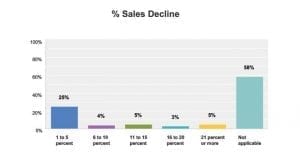 “Order-gatherers still hurt the floral industry badly,” wrote a florist in Indiana. “They promise delivery then can’t find a florist to deliver. This makes our industry look poor business people trying to capitalize on the emotion of Mother’s Day. All they do is cause people to want to spend their money on some other gift. “
“Order-gatherers still hurt the floral industry badly,” wrote a florist in Indiana. “They promise delivery then can’t find a florist to deliver. This makes our industry look poor business people trying to capitalize on the emotion of Mother’s Day. All they do is cause people to want to spend their money on some other gift. “
Other highlights from the survey include:
Crunch Time. The end of the week proved to be the busiest for many florists, with respondents reporting on average that 27 percent of orders came in on Friday; 21 percent on Saturday; 19 percent on Thursday and 12 percent on Wednesday.
Cut Flower Kind of Day. Respondents on average said that cut flowers made up 78 percent of sales; flowering and green houseplants constituted 14 percent; outdoor bedding and garden plants, 10 percent.
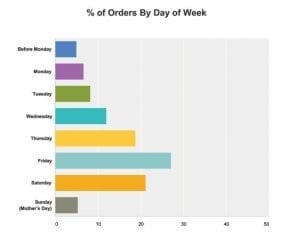 Call Me, Maybe. On average, 44 percent of Mother’s Day orders came in by phone; 21 percent by shop website and 21 percent from walk-in. About 17 percent were credited to wire services and order-gatherers.
Call Me, Maybe. On average, 44 percent of Mother’s Day orders came in by phone; 21 percent by shop website and 21 percent from walk-in. About 17 percent were credited to wire services and order-gatherers.
Open for Business? More than half of respondents never cut off orders completely for the holiday. Twenty –three percent stopped accepting them Saturday; 11 percent on Sunday and 5 percent on Friday. About 31 percent of respondents never suspended incoming orders. About 24 percent did so on Friday and 23 percent cut them off on Saturday. Nine percent stop taking those orders on Sunday.
By the Numbers. Small town shops were more likely to report higher returns this year than the general survey sample. In fact, 75 percent of self-identified small-town businesses saw sales increase. In addition, 65 percent of businesses with less than $300,000 in annual sales saw an increase and 63 percent of businesses with $1 million-plus in annual sales saw a jump.
